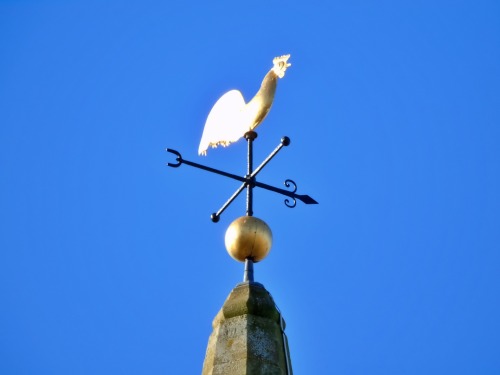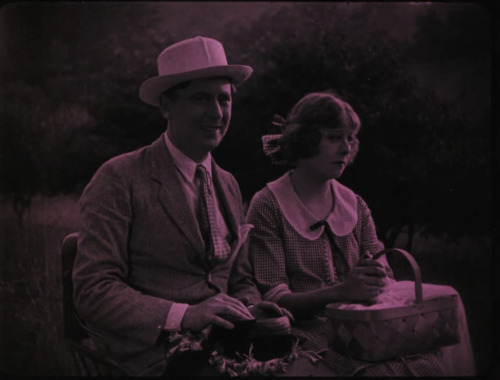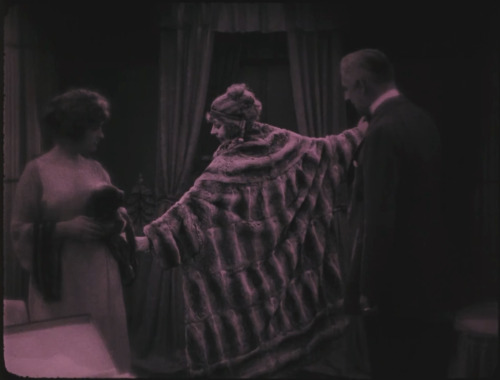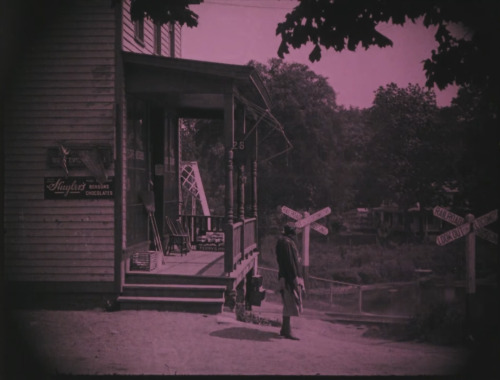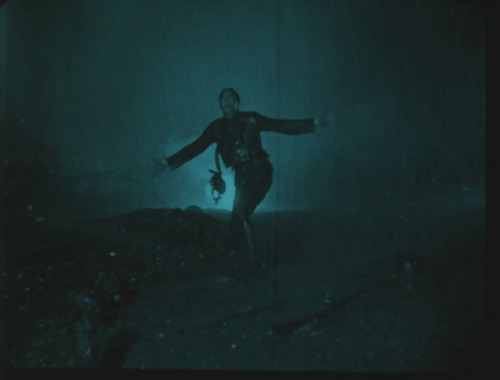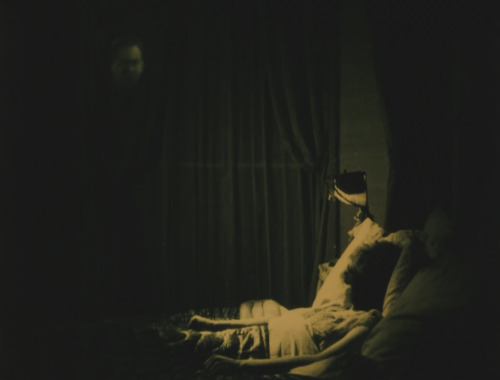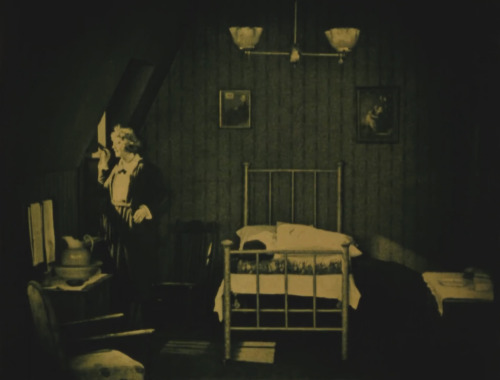#local history
The Cock o’ the Steeple.
Sunlight catching the weather vane cockerel on Falkirk Steeple.
The Steeple is an important part of Falkirk’s history and the weather vane cockerel has watched over the town from its lofty perch for many years. The weather vane is made of brass and measures 3 feet 4 inches wide by 2 feet 2 inches high. It was last removed in 2016 during the local landmark’s £750,000 restoration project.
When the Steeple was hit by lightning on 17th June 1927 the weather vane was flung from the Steeple into the court at the rear of 104 High Street which was then Wilson and Thomson Grocers. Following this the vane was restored and placed back on the top of the Steeple spire.
According to some records the vane bears the date 1814 indicating that it is the original weather vane from the current Steeple.
The poet Robert Buchanan wrote a series of articles in the 1870s for the Falkirk Herald called ‘the Cock o’ the Steeple’ in which he addressed the folk of the town and made a number of comments about individuals and events. After some repairs in 1869 he wrote:
“Thank ye bairns! I feel kinna firmer on my perch noo, and can turn my neb to a nor’-easter wi’ a feeling o’ security I haena kent for a lang time.”
Post link
1922 in 2022: Back Pay(1922)
Directed by Frank Borzage
Adapted for the screen by Frances Marion
Based on a story by Fannie Hurst
Photographed by Chester Lyons
Produced by Cosmopolitan Productions
Premiered on 8 January 1922
Synopsis:
Hester Bevins (Seena Owen) dreams of a bigger, more extravagant life than her small-town home of Demopolis can offer. When Hester decries her flannel and gingham lifestyle to her beau, Jerry (Matt Moore), he doesn’t take her seriously. Regardless, once Hester has the scratch, she moves to New York City. There, she toils in obscurity for a few years before she lands a tycoon boyfriend, Wheeler (J. Barney Sherry). Though Hester has settled into the lap of luxury, she hasn’t forgotten her roots. Hester returns to Demopolis for a spell while on a road trip with Wheeler and friends. There she finds the whole town has forgotten her, except for Jerry. Jerry still insists Hester belongs in gingham and with a heavy heart she rejects him again and returns to the city. Normal life resumes for Hester, while Jerry enlists to fight in World War I. After Hester discovers that Jerry has returned to the States wounded, she rushes to the hospital and is informed that he only has three weeks to live. Hester thinks up a scheme to make the most of his last days by marrying him and convincing the now-blind Jerry that she’s living in a humble one-room apartment on earnest wages. She easily gains Wheeler’s agreement to support this arrangement. The pair live out an imitation of Jerry’s modest domestic fantasy until Jerry’s death. Hester unexpectedly finds that she is unable to return to her former life. Hester is haunted by the spectre of Jerry and feels guilty for her ruse. After her maid foils an attempted suicide, Hester resolves to become the person Jerry believed she was. Hester moves into a dingy one-room apartment, reclaims her old job, and is determined to pay for Jerry’s funeral with money she earned “honestly” as a final act of atonement.
My Impressions:
There was a lot I liked about this movie, and I really enjoyed Seena Owen’s performance, but the morality of the story was so shallow that it left me frustrated.
There’s not much information online about the movie, so I tried to scan through movie magazines from the time with little luck. Then I ended up finding a contemporary review cited on Back Pay’s Wikipedia page! The reviewer, James W. Dean, was also disenchanted with the hollowness of the film. Dean was already familiar with the story from the original publication (in Cosmopolitan Magazine in 1921) and from the stage play which was running while Back Pay was produced and released. And, according to Dean, the movie adaptation gutted the substance of the story. This spurred me on to find a copy of the original story and golly was Dean right!
In the story, Hester’s childhood in Demopolis is recounted in a way that deeply informs the choices she makes as an adult. Hester was raised by a protective aunt who also happened to be running an adult establishment out of her home. These childhood experiences shape Hester’s view of men and her expectations of life. This also frames Demopolis as less of a sleepy, idyllic bit of Americana. The film contains no hint of Hester’s life before the plot commences.
The film also whittles down the character of Wheeler, who in the story has a wife and child he’s double timing. He’s also searingly referred to as a “parlor patriot.” As the war rages abroad, Wheeler is specifically described as a war profiteer. When Hester asks him to do a solid for a disabled veteran, she even mentions that it’s only right seeing how much money he’s made off the war!
There isn’t much different about Jerry between the two versions of the story, aside from some blatant anti-Semitism is the original story. Honestly, even with the bigotry removed, I found it hard to like a character whose main trait is invalidating his girlfriend’s self image.
While the original story also tackles morality and guilt, the added depth of Hester’s psychology and the added shittiness of Wheeler make for a much more dynamic story.
So, I’ve ragged a lot on what was removed from “Back Pay” when it was adapted for the screen, but there is one addition that stuck with me. It regards Hester’s live-in maid. The maid isn’t a full character in either version of the story. But, if you remember from the synopsis, after the maid saves Hester’s life, Hester decides to up and leave. In other words, Hester abandons this very loyal woman in the early hours of the morning, leaving her potentially homeless and jobless with absolutely no prior notice. But, seemingly Borzage had some awareness of how completely insensitive this act was, because the camera lingers on the (unfortunately uncredited) maid looking anxious and despondent after Hester’s departure. This minimal moment is more thought given to that character than the original story, shockingly.
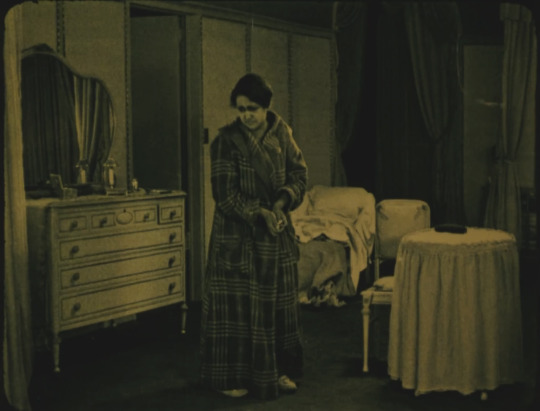
The aforementioned shot of the tragically uncredited maid.
Further Info: [below the jump!]
- Adjusted for inflation, the chinchilla coat that Hester wants Wheeler to buy for her would be $368,170.00 in 2022 dollars. Jerry’s funeral costs would be $8,848.63. (Although the movie is set some time in the 1910s, not 1922 so the numbers would be slightly different in actuality.)
- Back Pay was produced by Cosmopolitan Productions, which was owned by newspaper magnate William Randolph Hearst. The business model of Cosmopolitan was that it would have the film rights to the popular stories that ran in Hearst’s magazines and would also be able to promote the films in Hearst-owned publications. At the time Back Pay was made, Cosmopolitan’s films were distributed through Paramount.
- Back Pay was shot at Cosmopolitan’s New York studio located at Harlem River Park. The area used to contain an amusement park and casino. However, a year after Back Pay was released, while production ofLittle Old New York(1923) with Marion Davies was under way, the studio burned down. This precipitated the studio moving production to California.

Photo of Cosmopolitan’s studio c. 1923 from the HABG Task Force website.
The city block where the studio once stood (between 1st & 2nd and E 126th & E 127th in Harlem) was, until recently, a city bus depot abutting a bridge ramp. We often talk about how much has changed in Hollywood in the last century, but the old movie-making enclaves in New York and New Jersey have also changed massively! I bet the view across the river from the studio was lovely back then!
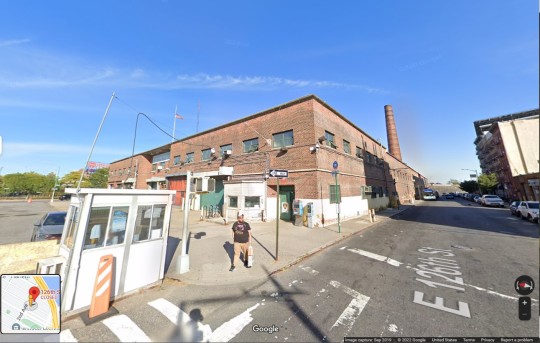
The block as seen on Google Maps in 2019. (Shoutout to this dude in a Dragon Ball Z t-shirt btw)
Seeing as this post is already a beast, I’ll quickly say that the history of this location, going all the way back to when Harlem was still Nieuw Harlem is fascinating and the redevelopment plans for the area sound great! The website Urban Archive has a full survey. It’s worth a read!
You can also check out the HABG Task Force website for details on the redevelopment, which is currently slated to be completed in 2023.
Post link

Subscribe to the Special Collections Newsletter!
Don’t forget, Special Collections has a monthly e-newsletter! This month, we asked project worker Katie Falbo some questions, including the weirdest subject heading she’s ever used. “Probably ‘Working cats’”, she said. “I’ve personally only used it once, but I’m always looking out for more photos to include with that subject heading.”
Each month we share new and noteworthy things from our local history archives and rare books department—upcoming events, Digital Collections updates, new archival acquisitions from individuals and community organizations, newly completed finding aids, featured blog posts, and more. Subscribe from the Special Collections page or from the newsletters section of the Contact Us page. Newsletter archives will be available on our websitefor up to 12 months.
A Local Museum for Local People (called David)
Our location is a Very Rural tourist information centre, with two visitors, two volunteers and a boarder collie.
Me: We did try to visit the local museum, but it was closed.
Tourist information lady: That is strange. It’s after Easter and before October, and it’s a Tuesday, and it’s not gone half one yet. It should be open, David is very keen.
Her friend: Unless The Other David was due on today?
TIL: I’ll phone David for you and ask him to pop down and open the museum.
Me: Stammers about that not being necessary, really, even as she’s making the call.
*quiet fear that this is about to go full League of Extraordinary Gentlemen*
TIL: He’s not picking up.
Me: THANKS BUT DON’T WORRY ABOUT IT, WE’LL CHECK OUT THE OLD CINEMA INSTEAD!
*visitors politely flee*
Brief History On Japanese Graves
A friend of mine requested to write a post regarding how general graves, tombs, and cemeteries in Japan have evolved over time in chronological order.
(Discretion: Images of human remains)
ー Jōmon Period (and prior)


Most of the cemeteries during this period were simple, community burial ground with stones surrounding the location like the ones seen in Hajime-sawashita Site [はじめ沢下遺跡] (Midori Ward [緑区], Sagamihara City [相模原市], Kanagawa Prefecture) above. Corpses buried underground are discovered resting in different positions where some had their body curved in an “U” shape which is a style referred to as Kussō [屈葬] or flexed burial while others such as the one below from Mid-Jōmon Period in Inariyama Site [稲荷山貝塚] (Minami Ward [南区], Yokohama City [横浜市], Kanagawa Prefecture) are positioned with all their four limbs stretched out which is called Shintensō [伸展葬] or extended burial.¹

ー Yayoi Period〜Kofun Period
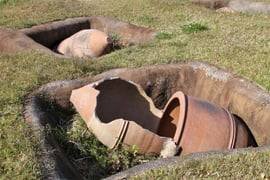
This is the period in Japanese history when coffins began to appear as well as the diversification of burial methods. At the end of Jōmon Period and throughout Yayoi period, Kamekanbo [甕棺墓] or “jar burial” like the ones above discovered in Yoshinogari Historical Park [吉野ヶ里歴史公園] (Yoshinogari Town [吉野ケ里町], Kanzaki Dist. [神崎郡], Saga Prefecture) becomes a common sight where jars/pots made of clay functions as a coffin used predominantly for placing deceased children² and there are two types of designs: Tankan [単棺] design like the one below left from Yoshitake-takagi Site [吉武高木遺跡] (Nishi Ward [西区], Fukuoka City [福岡市], Fukuoka Prefecture) where the corpse is inserted in a single jar/pot³ and Awaseguchi-kan [合口棺] design like the one below right from Nishioda Site [西小田遺跡] (Chikushino City [筑紫野市], Fukuoka Prefecture) where the opening of two separate jars/pots are conjoined together and sealed with pasting an additional clay around the brim to form a single coffin⁴.

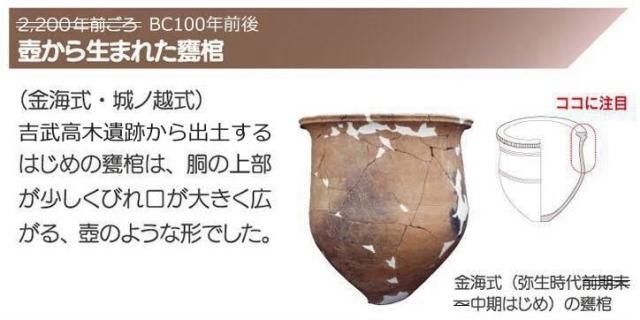
Another common coffins from Yayoi Period (which is then carried on to Kofun Period) are stone coffins like the recently excavated ones in Nagai Site [長井遺跡] (Yukuhashi City [行橋市], Fukuoka Prefecture) below and the unique feature of each coffins are that the corpse are found divided into three separate segments⁵; a custom that was unprecedented up until the excavation of this cemetery in year 2019. Motive behind this custom is currently unknown due to it being discovered just recently.

ー Kofun Period〜Heian Period

Though the burial custom amongst commoners haven’t changed that much since Yayoi Period, this time period is when “mega-mausoleum” prepared for ancient monarchs began to appear. Such as the famous Daisenryō-kofun [大仙陵古墳] above in Sakai City [堺市] (Ōsaka) where Emperor Nintoku [仁徳天皇] is believed to lay rest. However, not all Kofun are as large as the one in Sakai City like Yonezuka-kofun [米塚古墳] in Iwata City [磐田市] (Shizuoka Prefecture) below which is comparatively far more smaller and obscure.
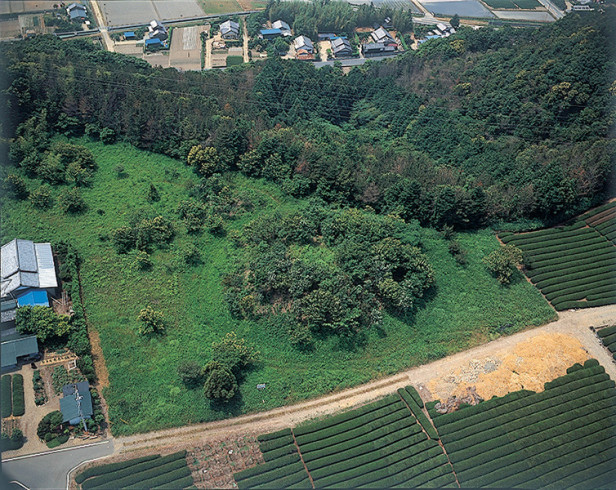
Although, these forms of mausoleums or any tombs in general, even began to shrink in size as well as becoming more simplistic due to the introduction of Buddhism and cremation where burnt bone dusts were collected then stored in pots/jars before burring⁶. Like with this Nara〜Heian Period grave below in Babawatauchi-yato Site [馬場綿内谷遺跡] (Tsurumi Ward [鶴見区], Yokohama City [横浜市], Kanagawa Prefecture), but not much is known aside from it being predominantly practiced by nobles.

(I’ve hit the maximum number of images in one post. So, the blog will continue on the reblogged post. Sorry for the inconveniences)
Sources:
1.“Jōmon-jidai-no-haka” [縄文時代の墓] via Kanagawa Archeology Foundation [かながわ考古学財団] (official)
2.Via Yoshinogari Historical Park [吉野ヶ里歴史公園] (official)
4.“”
5.Via Nishinippon-shinbun [西日本新聞] (news article)
6.“Nara Heian-jidai-no-haka” [奈良・平安時代の墓] via Kanagawa Archeology Foundation [かながわ考古学財団] (official)
7. “Ana-no-kōkogaku Yagura…” [穴の考古学 やぐら・横穴・洞穴の謎をさぐる] (1970) by Naotada Akahoshi [赤星 直忠] (1902-1991)
8. “Chūsei-toshi-kamakura…” [中世都市鎌倉-遺跡が語る武士の都] (1995) by Shinjirō Kawano [河野 真知郎] (n/a)
9.“Waseda-wīkurī” [早稲田ウィークリー] (2019) by Waseda University [早稲田大学] (academic article online)
What is the meaning of “compassion” embedded within the Lotus Sūtra?
Buddhist Parables (Chapter 1.): Migawari-jizō And The Great Compassion|能遮学侶|note


